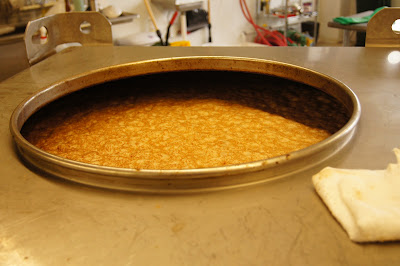Mitch and Whitney Ermatinger — after creating and rewriting multiple business plans over the course of years — decided to found a brewery in the Grand Rapids area that focuses on mixed-culture wild ales after seeing how popular they were in the rest of the country. The result of their hard work and planning is the new Speciation Artisan Ales in Comstock Park. The name Speciation is a reference to the evolutionary process by which new species emerge — an appropriate name for a brewery that uses wild microbes in its beers. “We wanted to create a cohesive brand,” Mitch explained to me during a visit to the brewery, “a theme with a large pool of names to draw from.” The theme of evolution is well suited for wild ales, as wild microbes tend to impart a wide range of characteristics to beer and exhibit variation from batch to batch — from microbe to microbe.
Mitch has a strong history of brewing. He cut his teeth as a homebrewer and employee at O’Connor’s Homebrew Supply before moving with Whitney to Colorado. Once there, Mitch joined the brewing team at Former Future Brewing Company — now known as Black Project Spontaneous & Wild Ales. Black Project — run by James Howat — specializes in spontaneously fermented beers. It was during this time that Mitch learned a great deal about wild and spontaneous fermentation. James, Mitch and the rest of the team at Black Project won two bronze medals for their wild ales at GABF in 2014 and 2015. Then, in 2016, Harmony Brewing Company hired Mitch to assist them in creating their sour program.
 |
| Speciation barrels |
 |
| Open fermentation |
 |
| Fermentation tank |
Tasting Notes for Genetic Drift
An American farmhouse Saison open-fermented with Brettanomyces bruxellensis var. Drie, Belle Saison, and Speciation’s house strain which was captured from a crabapple tree in Holland, MI. The malt build consists of Pilsner, Vienna, wheat, rye and oats. To top it off, this batch was dry hopped with Mosaic and Saaz. Mitch is utilizing solera techniques (adding fresh wort to containers with already fermented beer) to create future batches of Genetic Drift—which should result in similar beers that steadily change over time due to shifts in the microbial community of the solera.Appearance: Pale gold, hazy, with a delicate seafoam white head.
Aroma: Rustic, earthy funk. Overripened fruit, mango, pineapple, light stone fruit. Peppery phenols.
Palate: Follows the nose well—rustic, earthy, funky and lightly acidic. Fruit smoothie with tropical and stone fruits. Lemon. A light, grainy malt character. High carbonation. Pillowy mouthfeel with a light-medium body.
Finish: Dry with lingering acidity and bitterness.

No comments:
Post a Comment